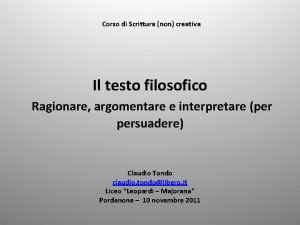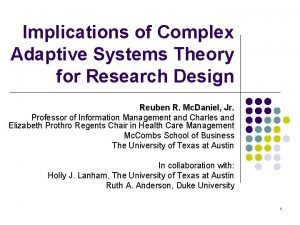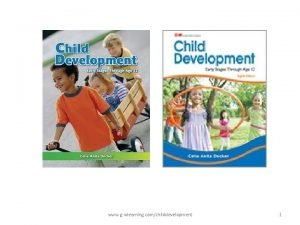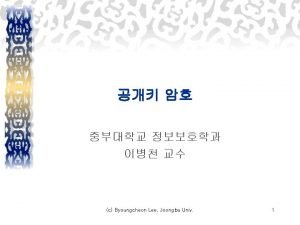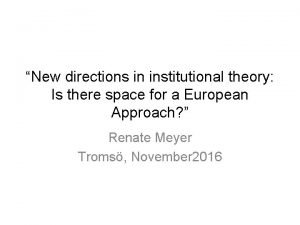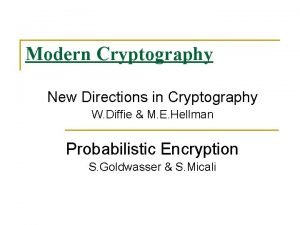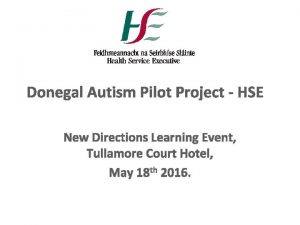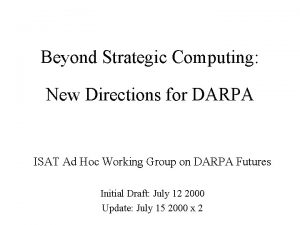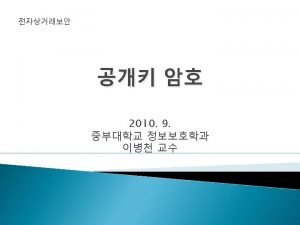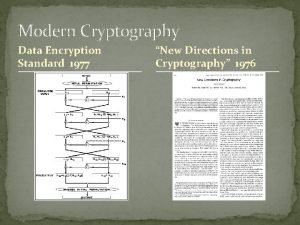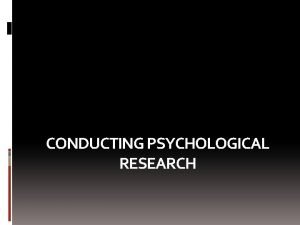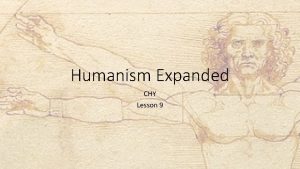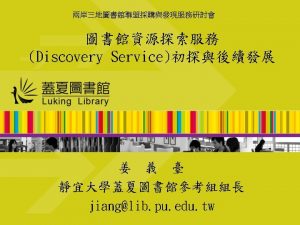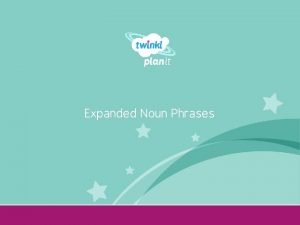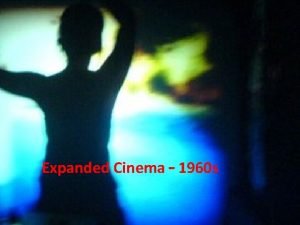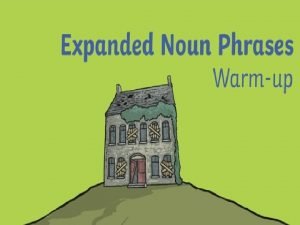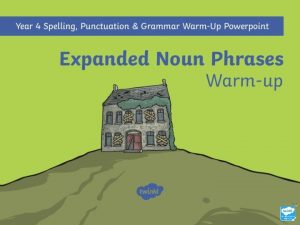Serendipity Expanded Exploring new directions for discovery learning













- Slides: 13

Serendipity Expanded Exploring new directions for discovery learning Silvia Bernardini School for Translators and Interpreters University of Bologna Forlì - Italy silvia@sslmit. unibo. it

Discovery learning - 1 The highlights • • The learner: a traveller (vs. a researcher) The teacher: a guide (vs. an instructor) The corpus: a stimulus (vs. an oracle) The aim: the development of “capacity” (rather than competence)

Discovery learning - 2 Concordancing large corpora Advantages size and variety initial enthusiasm, confidence Disadvantages limited decreasing interest, frustration, reference use

DL: New directions Idea: Combine different corpora and corpus analysis tools Objectives: Increase chances of serendipitous encounters (motivation) Raise the learners’ consciousness • intertextuality (Seidlhofer 2000) • scope of observations (applicability and variability)

The occasion • 4 th year research seminar In preparation for their final dissertation • Schedule 10 weekly meetings (1 h 30 m) • Status: Perceived as an extra burden Very heavy compulsory work load and attendance requirements

The students • • 10 (volunteers) All translators-to-be Good command of English Little familiarity with corpora and software (both theory and practice)

The ground to be covered • Familiarising the participants with available corpus tools • Bringing home to them a different view of language use patterning vs. slot-and-filler • Offering chances to experience DL. . . • …and to apply all the above to translation and/or language learning/teaching tasks

The corpora The BNC-Imag The BNC Sampler The Rushdie Monolingual Corpus and The Rushdie Parallel Corpus (Zanettin 2000) A home-made fiction comparable corpus (ITA -ENG)

How we got on - 1 1 Introduction: The phraseological viewpoint Mother tongue examples, foreign language exercises 2 Investigating phraseology with a large corpus (BNC) (high) standard(s) 3 From Cat. Ref queries to “specialised” corpora extremely high

How we got on - 2 4 Using different corpora to understand texts Chapter 1 of S. Rushdie’s The Moor’s Last Sigh 5 Using different corpora to translate texts and evaluate translations monolingual (gen & spec), parallel and comparable corpora 6 Assignments Either translate ch. 1 of Rushdie’s novel Grimus or give a presentation on phraseology from a corpus linguistics perspective to students of the “English language pedagogy” course

What the students said - 1 • They liked the idea of being in charge, of feeling competent (it does not often happen); • rapidly appreciated the relevance to their concerns as future translators and teachers; • independently started to reflect on their mother tongue as well as the foreign language; • answered questions that had not been tackled directly in class (is this approach relevant for high school teachers/students? How can it be adapted? )

What the students said - 2 • They wished they had more time • Frustration 1: if things are the way we presented them, one can never stop learning the language • Frustration 2: once you realise the way the language works, you are not confident in your output/intuition anymore

Desiderata • Complement this DL experience with more text-based and student-centred work (e. g. Seidlhofer’s approach) • Repeat the same experience with a reference corpus for Italian and less disparate translational resources • The CEXI Corpus
 Scapula ossification centers
Scapula ossification centers Serendipity testo argomentativo
Serendipity testo argomentativo Serendipity lll
Serendipity lll G-wlearning
G-wlearning New directions in cryptography
New directions in cryptography New directions for institutional research
New directions for institutional research 1976 new directions in cryptology
1976 new directions in cryptology New directions hse
New directions hse Darpa isat
Darpa isat New directions blackburn
New directions blackburn New directions in cryptography
New directions in cryptography Rijandael
Rijandael Cuadro comparativo e-learning b-learning m-learning
Cuadro comparativo e-learning b-learning m-learning Steps of psychological research
Steps of psychological research

